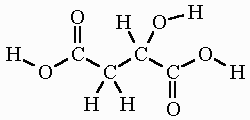To treat infection in the stomach and intestines use:
Tall Grass Prairie
Common Name: Wild onion
Genus and Species Name: Allium stellatum
Habitat: Meadows, swamps, fields, and openings of dry upland forests
Habitat: Meadows, swamps, fields, and openings of dry upland forests
Seasons: Early spring- fall (perennial)
Medicinal uses: The onion is eaten because it contains quercetin, which are anti-bacterial.
Preparation: Harvest onion plants, wash, and eat to kill bacteria in stomach.
Active Chemical Ingredient: quercetin
Seasons: Early spring- fall (perennial)
Medicinal uses: The onion is eaten because it contains quercetin, which are anti-bacterial.
Active Chemical Ingredient: quercetin
Chemical Formula: C15H10O7
Chemical Structure:

Chemical Structure:

Resources:
The onion plant kills E. coli bacteria. (2013, October 9). Retrieved September 9, 2015, from http://www.naturalhealth365.com/food_news/onion_bacteria.html
Allium cepa - Natural medicine facts. (n.d.). Retrieved September 9, 2015, from http://www.naturalmedicinefacts.info/plant/allium-cepa.html
Quercetin. (n.d.). Retrieved September 9, 2015, from http://pubchem.ncbi.nlm.nih.gov/compound/quercetin#section=2D-Structure
Wild Onion (Wild Pink Onion). (n.d.). Retrieved September 9, 2015, from http://mdc.mo.gov/discover-nature/field-guide/wild-onion-wild-pink-onion
Nyerges, C. (n.d.). Guide to Wild Foods and Useful Plants (p. 188,189).
Bown, D. (n.d.). Encyclopedia of Herbs and Their Uses (p. 234).
To treat diarrhea use:
Bown, D. (n.d.). Encyclopedia of Herbs and Their Uses (p. 234).
To treat diarrhea use:
Eastern Deciduous Forest
Common Name: Red oak
Genus and Species Name: Quercus rubra
Habitat: Fields, waste places, and yards
Seasons: Bark is available year round.
Medicinal uses: The tannins (an astringent that tighten the intestinal lining) in the bark stop diarrhea.
Preparation: Ground bark is boiled in water to make a tea for 20 minutes. Then, strained and drank.
In addition, drink extra fresh water to prevent dehydration.
Active Chemical Ingredient: tannin
Chemical Formula: C76H52O46
Chemical Structure:

Habitat: Fields, waste places, and yards
Seasons: Bark is available year round.
Medicinal uses: The tannins (an astringent that tighten the intestinal lining) in the bark stop diarrhea.
Preparation: Ground bark is boiled in water to make a tea for 20 minutes. Then, strained and drank.
Active Chemical Ingredient: tannin
Chemical Structure:

Resources:
Diarrhea, Dysentery and Cholera. (n.d.). Retrieved September 7, 2015, from http://natureheals.info/health/dysentery.html
Quercus rubra - Natural medicine facts. (n.d.). Retrieved September 7, 2015, from http://www.naturalmedicinefacts.info/plant/quercus-rubra.html
(n.d.). Retrieved September 7, 2015, from https://en.wikipedia.org/wiki/Tannin
Chevallier, A., & Keifer, D. (2010). Herbal remedies. New York: Metro Books.
Oak Quercus robur. (n.d.). Retrieved September 7, 2015, from http://www.anniesremedy.com/herb_detail376.php
Resources:
Diarrhea, Dysentery and Cholera. (n.d.). Retrieved September 7, 2015, from http://natureheals.info/health/dysentery.html
Quercus rubra - Natural medicine facts. (n.d.). Retrieved September 7, 2015, from http://www.naturalmedicinefacts.info/plant/quercus-rubra.html
(n.d.). Retrieved September 7, 2015, from https://en.wikipedia.org/wiki/TanninChevallier, A., & Keifer, D. (2010). Herbal remedies. New York: Metro Books.
Oak Quercus robur. (n.d.). Retrieved September 7, 2015, from http://www.anniesremedy.com/herb_detail376.php
Tall Grass Prairie
Common Name: Winged sumac
Genus and Species Name: Rhus copallinum
Habitat: Thickets, open woods, and prairies
Seasons: Bark is available year-round.
Medicinal uses: Bark is used to treat diarrhea by making an astringent tea.
Preparation: Brew the bark in water, strain, and drink tea to alleviate diarrhea.
In addition, drink extra fresh water to prevent dehydration.
Active Chemical Ingredient: malic acid
Chemical Formula: C4H6O5
Habitat: Thickets, open woods, and prairies
Seasons: Bark is available year-round.
Medicinal uses: Bark is used to treat diarrhea by making an astringent tea.
In addition, drink extra fresh water to prevent dehydration.
Active Chemical Ingredient: malic acid
Chemical Structure:

Chemical Structure:

Resources:
(n.d.). Retrieved September 7, 2015, from https://commons.wikimedia.org/wiki/File:Allantoin_chemical_structure.png
Winged Sumac (Dwarf Sumac; Shining Sumac). (n.d.). Retrieved September 7, 2015, from http://mdc.mo.gov/discover-nature/field-guide/winged-sumac-dwarf-sumac-shining-sumac
Smooth SumacRhus glabra. (n.d.). Retrieved September 7, 2015, from http://www.bio.brandeis.edu/fieldbio/medicinal_plants/pages/Smooth_Sumac.html
First Ways. (n.d.). Retrieved September 7, 2015, from http://firstways.com/2011/08/23/how-and-why-to-eat-sumac/
Handbook of Herbs and Spices. (n.d.). Retrieved September 7, 2015, from https://books.google.com/books?id=2I9wAgAAQBAJ&pg=PA565&lpg=PA565&dq=what chemical makes sumac bark astringent&source=bl&ots=lMKtR2_anU&sig=_MUjofBZoI-fAiowjzXw85GzknY&hl=en&sa=X&ved=0CC8Q6AEwBGoVChMIoPHO7KjkxwIVQzQ-Ch01oQDy#v=onepage&q=what chemical
Resources:
(n.d.). Retrieved September 7, 2015, from https://commons.wikimedia.org/wiki/File:Allantoin_chemical_structure.pngWinged Sumac (Dwarf Sumac; Shining Sumac). (n.d.). Retrieved September 7, 2015, from http://mdc.mo.gov/discover-nature/field-guide/winged-sumac-dwarf-sumac-shining-sumac
Smooth SumacRhus glabra. (n.d.). Retrieved September 7, 2015, from http://www.bio.brandeis.edu/fieldbio/medicinal_plants/pages/Smooth_Sumac.html
First Ways. (n.d.). Retrieved September 7, 2015, from http://firstways.com/2011/08/23/how-and-why-to-eat-sumac/
Handbook of Herbs and Spices. (n.d.). Retrieved September 7, 2015, from https://books.google.com/books?id=2I9wAgAAQBAJ&pg=PA565&lpg=PA565&dq=what chemical makes sumac bark astringent&source=bl&ots=lMKtR2_anU&sig=_MUjofBZoI-fAiowjzXw85GzknY&hl=en&sa=X&ved=0CC8Q6AEwBGoVChMIoPHO7KjkxwIVQzQ-Ch01oQDy#v=onepage&q=what chemical



No comments:
Post a Comment